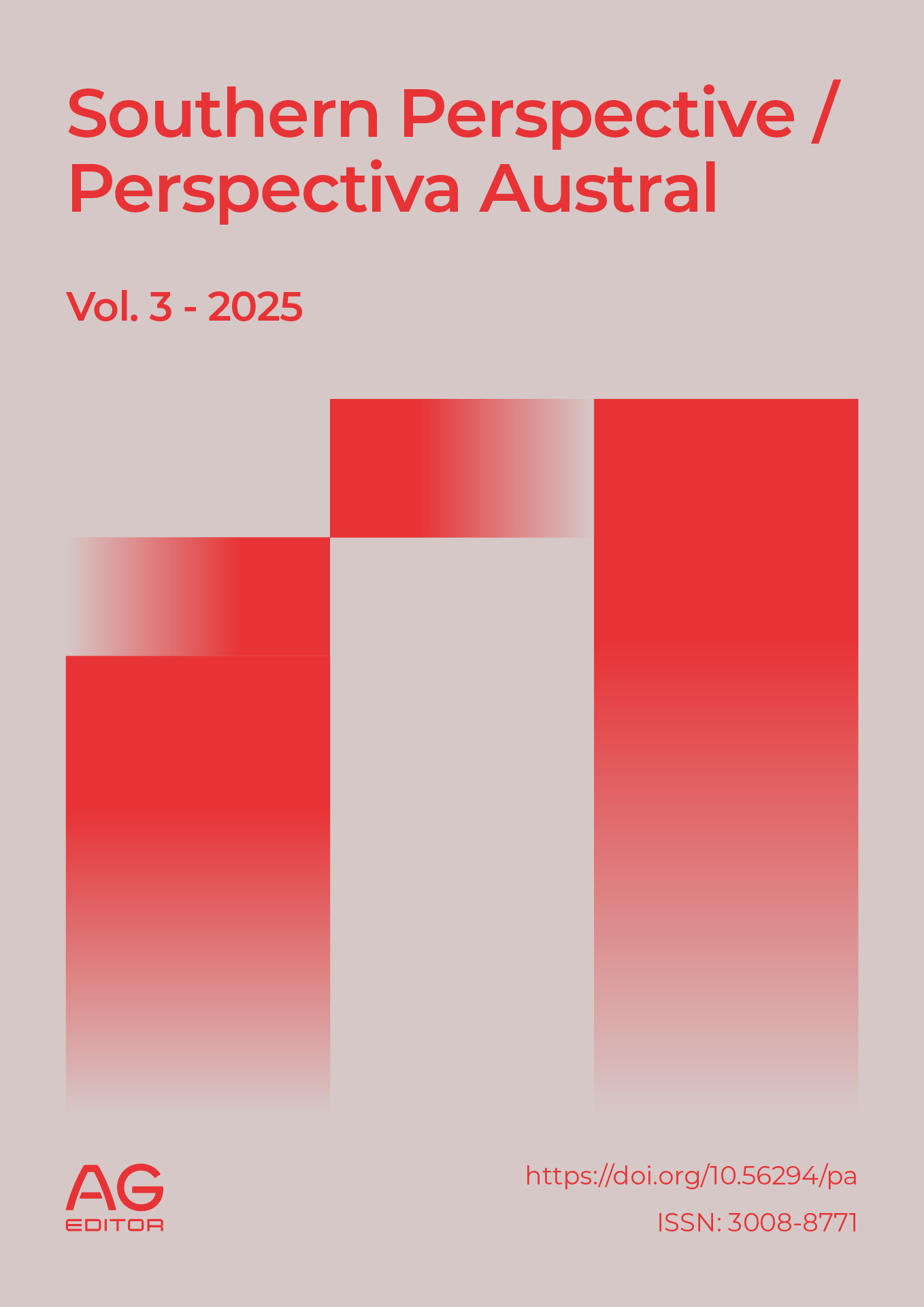TERF wars: the construction of identities and virtual communities Sofía de Teresa Trueba
DOI:
https://doi.org/10.56294/pa202595Keywords:
TERF wars, feminism, intersectionality, group identity, virtual communitiesAbstract
TERF wars are confrontations between feminists who consider that trans women are not women and therefore cannot belong to feminism, and feminists who consider that trans women are women and can participate in this movement.
Both groups are creating virtual communities that allow them to express themselves, build bonds of support, represent their values and ideas, and create a group identity.
Something extremely interesting about the identities of both sides is that - whether in a state of confrontation or not - they combine elements of gender with issues of social class and ethnic origin. While in trans-inclusive groups communities associated with being dark-skinned and poor are created, in trans-exclusionary groups materials that identify with non-popular social classes are shared.
This coalition between issues of gender, class and ethnicity can be understood with the theory of intersectionality, which explains that people are simultaneously excluded because of various characteristics; for example, because of skin color and social class as well as gender, which allows us to understand the emergence of alliances between trans women and dark-skinned women in the context of TERF wars, an issue demonstrated by various researchers within different countries, and which I have been able to detect in Mexico within different social networks.
References
Aguirre-Sánchez-Beato, S. (2020). EXPLAINING TRANSPHOBIA AND DISCRIMINATION AGAINST TRANS PEOPLE: A REVIEW OF THEORETICAL APPROACHES. Psicologia & Sociedade, 32, e190274. https://doi.org/10.1590/1807- 0310/2020v32190274
Bettcher, T. M. (2014). Transphobia. TSQ: Transgender Studies Quarterly, 1(1–2), 249–251. https://doi.org/10.1215/23289252-2400181
Butler, J. (2011). Bodies that matter: On the discursive limits of “sex”. Routledge.
Carothers, T., & O’Donohue, A. (Eds.). (2019). Democracies divided: The global challenge of political polarization. Brookings Institution Press.
Castro Cornejo, R. (2023). The AMLO Voter: Affective Polarization and the Rise of the Left in Mexico. Journal of Politics in Latin America, 15(1), 96–112. https://doi.org/10.1177/1866802X221147067
Cerva Cerna, D. (2020). La protesta feminista en México. La misoginia en el discurso institucional y en las redes sociodigitales. Revista Mexicana de Ciencias Políticas y Sociales, 65(240). https://doi.org/10.22201/fcpys.2448492xe.2020.240.76434
Collins, R. (2008). Violence: A micro-sociological theory. Princeton Univ. Press.
Coronado Sopeña, N. (2020, julio 21). Marcela Lagarde: “Tenemos que decir no al borrado de mujeres diciendo sí a su existencia legal y protegida”. https://www.publico.es/sociedad/entrevista-macela-lagarde-lagarde-decir-no-borrado- mujeres-diciendo-existencia-legal-protegida.html
Dayton, B. W., & Kriesberg, L. (2022). Constructive conflicts: From emergence to transformation (Sixth edition). Rowman & Littlefield.
De Beauvoir, S. (1949). The second sex. En Classic and Contemporary Readings in Sociology. Routledge.
Duff, P. A. (2002). The Discursive Co-construction of Knowledge, Identity, and Difference: An Ethnography of Communication in the High School Mainstream. Applied Linguistics, 23(3), 289–322. https://doi.org/10.1093/applin/23.3.289
Ferenczi, S., Balint, M., & Mosbacher, E. (2018). The unwelcome child and his death instinct 1:(1929). En Final contributions to the problems and methods of psycho-analysis (pp. 102–107). Routledge.
Ferré Pavia, C., & Zaldívar, G. (2022). El feminismo transexcluyente en Twitter: Un monólogo sesgado en #ContraElBorradoDeLasMujeres. Revista ICONO 14. Revista científica de Comunicación y Tecnologías emergentes, 20(2). https://doi.org/10.7195/ri14.v20i2.1865
Frankel, J. (2002). Exploring Ferenczi’s Concept of Identification with the Aggressor: Its Role in Trauma, Everyday Life, and the Therapeutic Relationship. Psychoanalytic Dialogues, 12(1), 101–139. https://doi.org/10.1080/10481881209348657
Galtung, J. (1996). Peace by Peaceful Means: Peace and Conflict, Development and Civilization. SAGE Publications Ltd. https://doi.org/10.4135/9781446221631
García González, L. Á., Iturralde Chaparro, E., Universidad Nacional Autónoma de México, Ramos Yebra, J. A., & Universidad de Guanajuato. (2023). Polarization of the feminist movement in Mexico based on digital methods, the sentiment analysis and the hashtags #UNAMFeminista and #UNAMSinTransfobia. Paakat: Revista de Tecnología y Sociedad, 13(25), 1–25. https://doi.org/10.32870/Pk.a13n25.800
Hancock, A.-M. (2019). Empirical Intersectionality: A Tale of Two Approaches. En O. Hankivsky & J. S. Jordan-Zachery (Eds.), The Palgrave Handbook of Intersectionality in Public Policy (pp. 95–132). Springer International Publishing. https://doi.org/10.1007/978-3-319-98473-5_5
Heller, M. (2011). Paths to Post-Nationalism. Oxford University Press. https://doi.org/10.1093/acprof:oso/9780199746866.001.0001
Hines, S. (2019). The feminist frontier: On trans and feminism. Journal of Gender Studies, 28(2), 145–157. https://doi.org/10.1080/09589236.2017.1411791
Hines, S. (2020). Sex wars and (trans) gender panics: Identity and body politics in contemporary UK feminism. The Sociological Review, 68(4), 699–717. https://doi.org/10.1177/0038026120934684
Hogg, M. A., Terry, D. J., & White, K. M. (1995). A Tale of Two Theories: A Critical Comparison of Identity Theory with Social Identity Theory. Social Psychology Quarterly, 58(4), 255. https://doi.org/10.2307/2787127
INE. (2023, julio 20). Aprueba INE expedición de la Credencial para Votar de las personas trans con identidad de género autopercibida. Central Electoral. https://centralelectoral.ine.mx/2023/07/20/aprueba-ine-expedicion-de-la-credencial-para- votar-de-las-personas-trans-con-identidad-de-genero-autopercibida/
Janice G.. Raymond. (1979). The Transsexual Empire: The making of the she-male. Beacon Press.
May, V. M. (2015). Pursuing intersectionality, unsettling dominant imaginaries. Routledge, Taylor & Francis Group.
Nascimento, S. D. S. (2022). EPISTEMOLOGIAS TRANSFEMINISTAS NEGRAS: PERSPECTIVAS E DESAFIOS PARA MULHERIDADES MÚLTIPLAS. Estudos Históricos (Rio de Janeiro), 35(77), 548–573. https://doi.org/10.1590/s2178- 149420220311
Nochebuena, M. (2024). 8M: Por cada transfeminicidio en México hay hasta tres más no registrados, estiman activistas. https://animalpolitico.com/genero-y- diversidad/transfemicidio-mexico-subregistro-violencia
O’Reilly, K. (2012). Ethnographic Methods (0 ed.). Routledge. https://doi.org/10.4324/9780203864722
Pink, S. (2021). Doing visual ethnography (Fourth edition). SAGE.
Pink, S., Horst, H., Lewis, T., Hjorth, L., & Postill, J. (2015). Digital ethnography: Principles and practice.
Rothschild, J. E., Howat, A. J., Shafranek, R. M., & Busby, E. C. (2019). Pigeonholing Partisans: Stereotypes of Party Supporters and Partisan Polarization. Political Behavior, 41(2), 423–443. https://doi.org/10.1007/s11109-018-9457-5
Rovira Sancho, G., & Morales I Gras, J. (2022). Idus de marzo en México. La acción directa en las redes y en las calles de las multitudes conectadas feministas. Teknokultura. Revista de Cultura Digital y Movimientos Sociales, Avance en línea, 1–16. https://doi.org/10.5209/tekn.81013
Rubin, G. S. (2002). Thinking sex: Notes for a radical theory of the politics of sexuality. En Culture, society and sexuality (pp. 143–178). Routledge.
Stephan, W. G., & Rosenfield, D. (1979). Black self-rejection: Another look. Journal of Educational Psychology, 71(5), 708–716. https://doi.org/10.1037/0022-0663.71.5.708
Stryker, S. (2013). (De) subjugated knowledges: An introduction to transgender studies. En The transgender studies reader (pp. 1–17). Routledge.
Tajfel, H. (1974). Social identity and intergroup behaviour. Social Science Information, 13(2), 65–93. https://doi.org/10.1177/053901847401300204
Van De Mieroop, D. (2015). Social Identity Theory and the Discursive Analysis of Collective Identities in Narratives. En A. De Fina & A. Georgakopoulou (Eds.), The Handbook of Narrative Analysis (1a ed., pp. 408–428). Wiley. https://doi.org/10.1002/9781118458204.ch21
Van Dijk, T. A. (2015). Critical Discourse Analysis. En D. Tannen, H. E. Hamilton, & D. Schiffrin (Eds.), The Handbook of Discourse Analysis (1a ed., pp. 466–485). Wiley. https://doi.org/10.1002/9781118584194.ch22
Whittle, S., & Stryker, S. (Eds.). (2013). The Transgender Studies Reader. Taylor and Francis.
Williams, C. (2020). The ontological woman: A history of deauthentication, dehumanization, and violence. The Sociological Review, 68(4), 718–734. https://doi.org/10.1177/0038026120938292
Worthen, M. G. F. (2022a). This is my TERF! Lesbian Feminists and the Stigmatization of Trans Women. Sexuality & Culture, 26(5), 1782–1803. https://doi.org/10.1007/s12119-022- 09970-w
Worthen, M. G. F. (2022b). This is my TERF! Lesbian Feminists and the Stigmatization of Trans Women. Sexuality & Culture, 26(5), 1782–1803. https://doi.org/10.1007/s12119-022- 09970-w
Downloads
Published
Issue
Section
License
Copyright (c) 2025 Sofía de Teresa Trueba (Author)

This work is licensed under a Creative Commons Attribution 4.0 International License.
The article is distributed under the Creative Commons Attribution 4.0 License. Unless otherwise stated, associated published material is distributed under the same licence.






